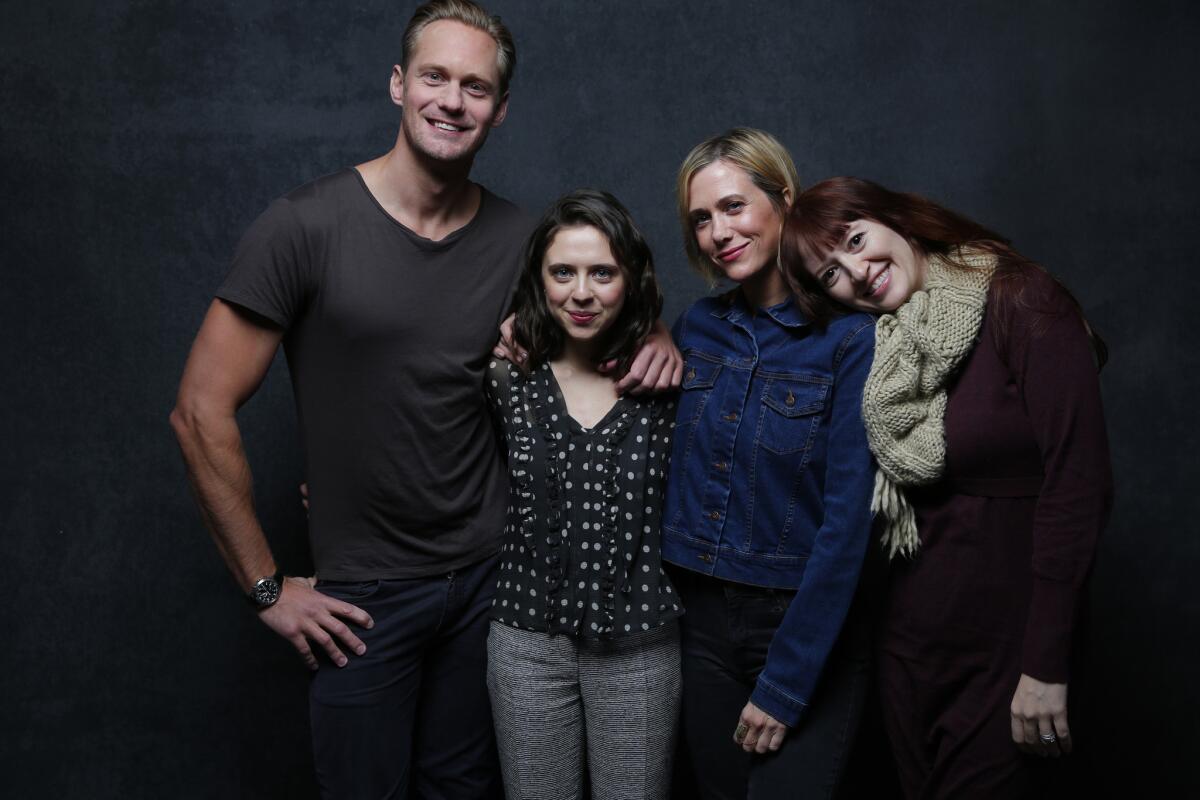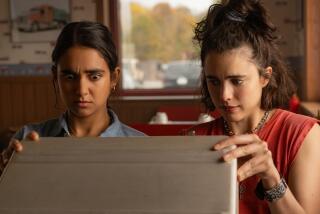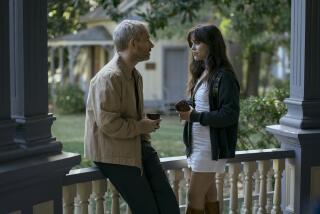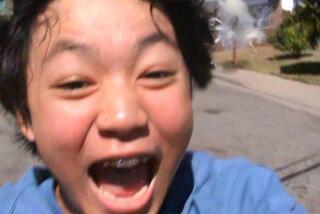Sundance 2015: How ‘Diary of a Teenage Girl’ one-ups ‘An Education’

Maybe it’s something about the word “girl” in the title. Or maybe it’s what happens when you make a coming-of-age movie with animation.
A number of factors may be at play. But as Sundance heads into its final phase, it’s clear that “Me and Earl and the Dying Girl” -- a coming-of-age story with animation -- shares breakout status with one other film: “The Diary of a Teenage Girl,” a (yep) coming-of-age story with animation.
I saw “Diary” on Friday, joining the hordes of media types who heard the buzz from an earlier screening and wanted to see how it measured up. Marielle Heller’s debut film, with an electric performance by the young British newcomer Bel Powely, more than lived up to the hype.
The movie, based on Phoebe Gloeckner’s graphic novel, looks at Minnie Goetze, a teenager in 1976 San Francisco who, while living with her free-loving mother (Kristen Wiig) in a kind of indulgence-happy bohemia, begins an affair with said mother’s boyfriend.
In Heller’s sure storytelling hands (and Powley’s deft performance,) the relationship is treated neither as taboo nor as a one-off; it’s a regular, passionate thing, and without the easy lines of manipulator and manipulated. At a post-screening question-and-answer session, Heller said she was a little concerned there would be problems with the MPAA or conservative theaters over the matter-of-fact handling of an underage romance. And, indeed, the ways of conservative arbiters are hard to underestimate.
But there’s something so frank and raw, so real and true, about “Diary” that it would be a tragedy if the movie faced such hindrances (though such authenticity is exactly what might make self-appointed gatekeepers nervous; it’s a lot harder to write off a story when it’s this human).
Minnie, it should be said, also explores her sexuality with a boy in her class, a girl from the neighborhood and a close female friend--a young woman seeking to learn about herself through sex (and vice versa), and a larger movie more interested in the relationships between sex, love, identity and family than any in recent memory. “Bel and I talked a lot, constantly checking and re-checking, ‘does this feel real?’ Is this how I would have talked Is this how I would have felt?’” Heller said after the screening.)
In some ways, the film evokes Carey Mulligan’s “An Education,” also a story of forbidden love with an older man that jolted Sundance five years ago, and which also offered a revelatory new performance by a young British talent.
But Heller has set up something more complex by rooting the story in free love-1970s San Francisco instead of repressed 1960’s England. Where the latter becomes a simple story of rebellion, “Diary” is more ambiguous. After all, Minnie already has plenty of freedom --her mother is encouraging her to have more sex--which makes her actions attributable to something deeper and more existential than a simple questioning of authority.
“Diary” also shares some similarities with that other “girl” movie at this year’s Sundance, “Me and Earl and the Dying Girl” (about a high-school senior whose life is changed when he befriends a girl with cancer). In each, a young person tries to find themselves after an unexpected occurrence rocks their world, and it’s unclear they’re going to come out OK on the other side. At a moment of hand-wringing over millennial futures by an older generation it’s easy to understand how each movie was made, and why they might become popular.
”Earl” is undoubtedly the funnier, slicker version (fittingly landing distribution at the festival with Fox Searchlight, it of “The Grand Budapest Hotel” and “[500] Days of Summer”), while “Diary” is the dramatic and arguably deeper version of the form (fittingly landing at Sony Pictures Classics, it of “Whiplash,” “Amour” and, well, “An Education”).
There is room for each film. Just as the coming-of-age genre has expanded, varieties have as well. As Minnie Goetze might tell you, sometimes to really understanding something you need more than just one.
Twitter: @ZeitchikLAT
More to Read
Only good movies
Get the Indie Focus newsletter, Mark Olsen's weekly guide to the world of cinema.
You may occasionally receive promotional content from the Los Angeles Times.







